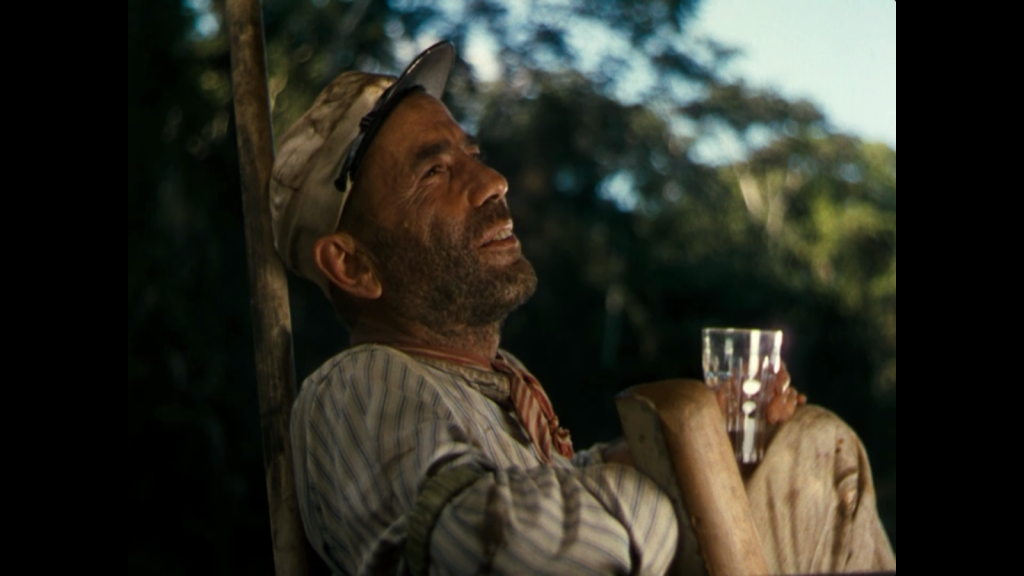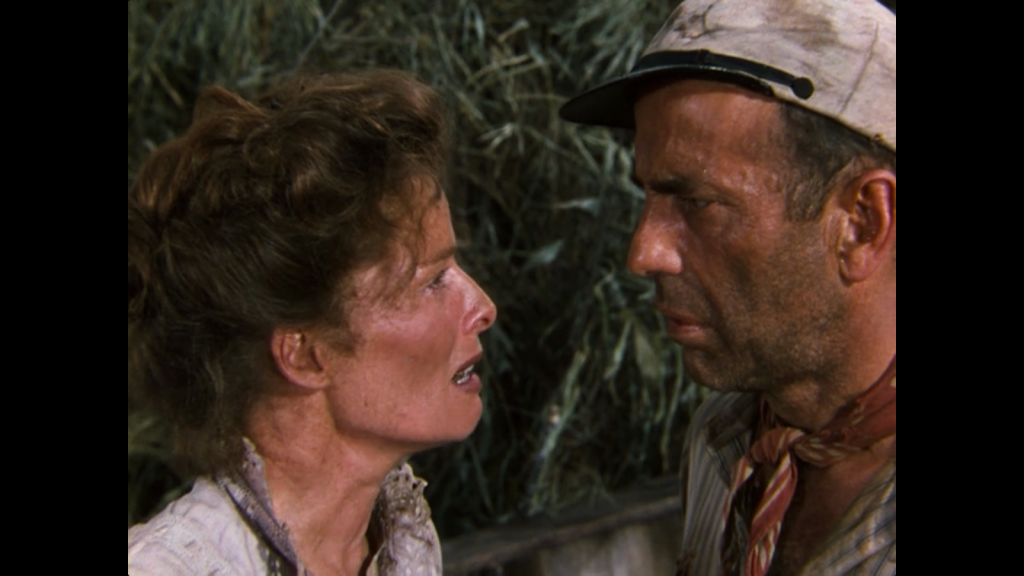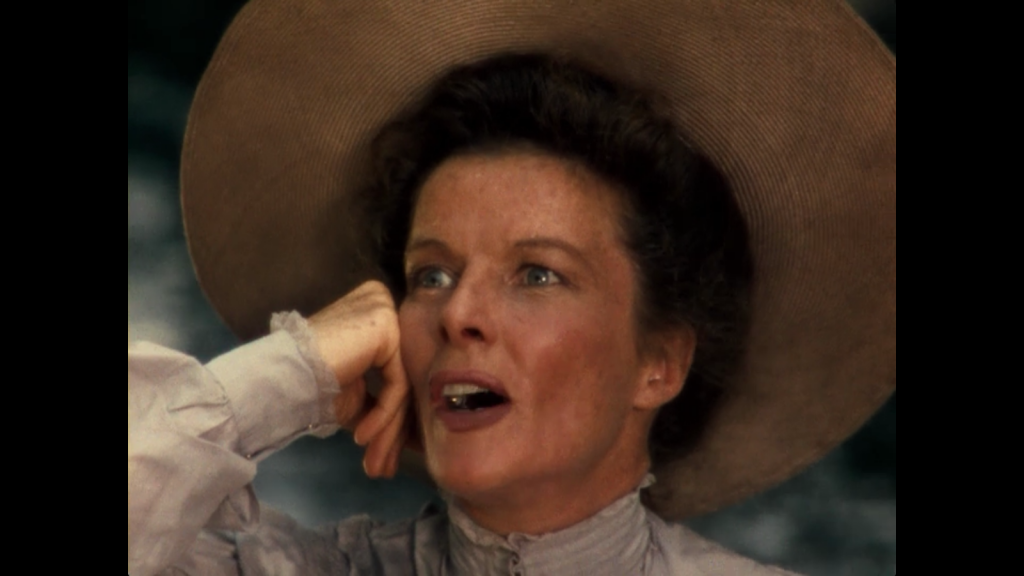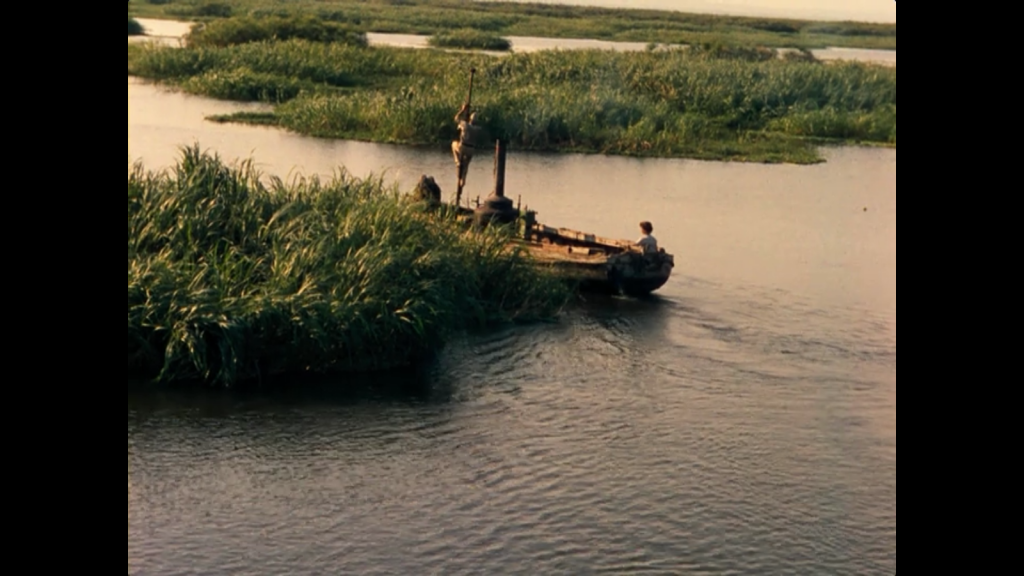African Queen, The (1951)
“Could you make a torpedo? Well, do so, Mr. Allnut.”
|
Synopsis: |
|
Genres, Themes, Actors, and Directors:
Response to Peary’s Review: Peary’s rather short review of this enduring classic fails to mention much about its fabled production history (recounted by Hepburn in her creatively titled memoir The Making of the African Queen: Or, How I Went to Africa with Bogart, Bacall and Huston and Almost Lost My Mind). As noted in TCM’s “Behind the Camera” overview, while Hepburn and Huston adored shooting on-location in Africa, Bogart was miserable and couldn’t wait to return back home to “civilization”; fortunately, his wife (Lauren Bacall) was on hand to help make things more tolerable for everyone. Throughout filming — while Huston was tangentially obsessed with hunting an elephant — the cast and crew were bedeviled by all kinds of challenges (torrential rains, wild animals, contaminated water, and much more), thus adding to the authenticity of the final product. Indeed, it’s remarkably refreshing to see how truly filthy both Bogart and Hepburn get during their onscreen adventures — and it’s equally satisfying to witness how “there is a division of labor” throughout, with Hepburn’s seemingly prim and proper spinster immediately proving herself to be unexpectedly savvy, brave, and thrill-seeking, thereby slowly seducing Bogart’s crusty captain. Though you’d never know it from watching her pumping organ pedals in the film’s opening sequence (a wonderfully droll snapshot of her life as a missionary), Hepburn’s Rose Sayer turns out to be one of cinema’s strongest female protagonists; her character arc is truly a joy to behold. My favorite scene is probably the one in which the couple team together to fix The African Queen, utilizing the “primitive” tools and materials they have at hand (suggested by Hepburn herself), and doing the bulk of their work underwater. Bogart won an Academy Award for his humorous performance as Charlie Allnut (a great last name!), though as Peary notes, “for some reason the equally fine Hepburn (who based her character [in part] on Eleanor Roosevelt) didn’t even get nominated”; both actors — who literally carry the entire movie — are at the peak of their game. The location shooting (with cinematography by Jack Cardiff) is equally noteworthy — and again, reading about the film’s production history gives one added appreciation for what it took to achieve such authenticity. With that said, I’ll admit to finding the obvious use of rear-screen projection at times to be somewhat distracting; however, one must simply accept this as an artifact of the times. Finally, the screenplay — co-written by James Agee and Huston, with assistance from Peter Viertel and John Collier — is consistently suspenseful, never dumbing down the material, and allowing for plenty of humorous interplay between the leads. As noted in Bosley Crowther’s review for the New York Times (where he refers to it as “a well-disguised spoof”), the tale “is so personally preposterous and socially bizarre that it would take a lot of doing to be made convincing in the cold, clear light of day” — and “so Mr. Huston merits credit for putting this fantastic tale on a level of sly, polite kidding and generally keeping it there, while going about the happy business of engineering excitement and visual thrills.” Well put, Mr. Crowther. Redeeming Qualities and Moments:
Must See? Categories
(Listed in 1001 Movies You Must See Before You Die) Links: |





One thought on “African Queen, The (1951)”
A no-brainer must – and a perfect film!
‘TAQ’ is further proof of why I am a hardcore John Huston fan, and why he is my favorite director. He has rarely disappointed me. And I use that word ‘disappointed’ lightly. If he has a few misguided films on his resume, his overall track record is still phenomenally impressive.
‘TAQ’ is a classic for quite a few reasons. Mainly, the film is nothing short of confident from start to finish – an accomplishment in itself, when one considers where the film was mostly shot. (~as recounted in Hepburn’s wonderful memoir.) With the aid of a crackerjack screenplay, the film establishes place, time and characters in a remarkably vivid manner. Personally, each time I see it – and I do revisit from time to time – it never occurs to me that anything about it is the least bit preposterous. That’s not to say it isn’t – just that I never feel it is. I totally buy into it as presented.
This truly is one of the loveliest love stories ever – with two of the least likely candidates for love, which makes it all the more thrilling. The tentative steps that build the love are carefully navigated. One ends up being infinitely happy for these two characters. Naturally, everyone deserves love, regardless – nevertheless, it’s so easy to root for two whose chances for a love like theirs are slim indeed.
As stated, at the same time we never lose track of the fact that this an adventure tale. This is once again where the film surprises, considering the two who set out on said adventure. The point is made that certain people can be made of stuff more solid than they imagine.
Although, aside from the camerawork, ‘TAQ’ is strong enough to hold its own, DP Cardiff once again shows why he was in such demand. One wonders, for example, what kind of filters he used to make Bogart and Hepburn – playing two rather down and out characters – look so striking. Even though they are not a romantic couple in ‘traditional Hollywood terms, they look amazing, almost throughout.
I’m indifferent about the Oscars in general but I’m glad Bogart won one for this – his Charlie is among a handful of his best roles. For her part, Hepburn here is unlike how we see her anywhere else. In the space of 105 minutes, we witness these two exhibiting a united master class in screen acting.
‘TAQ’ is a kind of companion piece to Huston’s ‘Heaven Knows, Mr. Aliison’ – both feature a woman of God ‘pitted’ against a rough-and-tumble type. The two films are equal in strength – but it’s nice for the romantics with more pressing needs in the audience that they can give over to the unbridled hope of romance on display in ‘TAQ’.